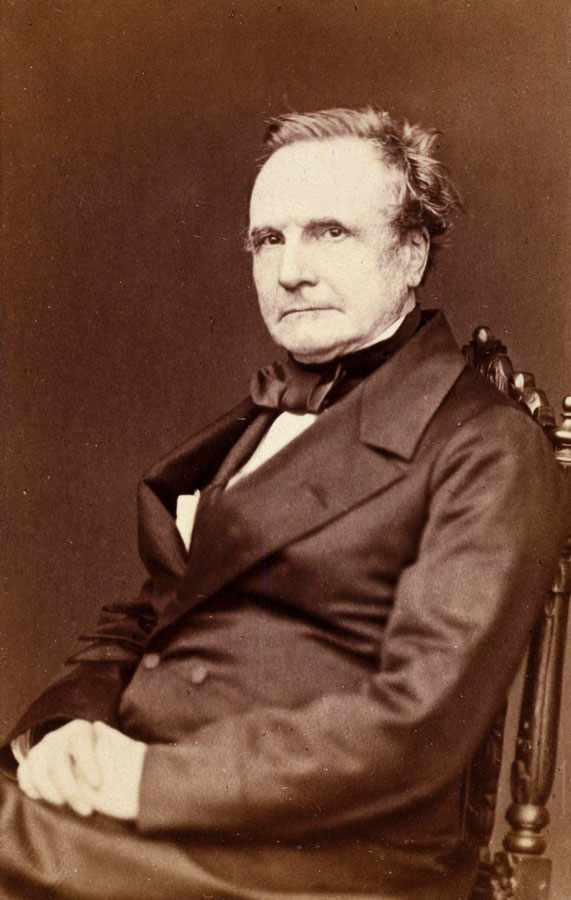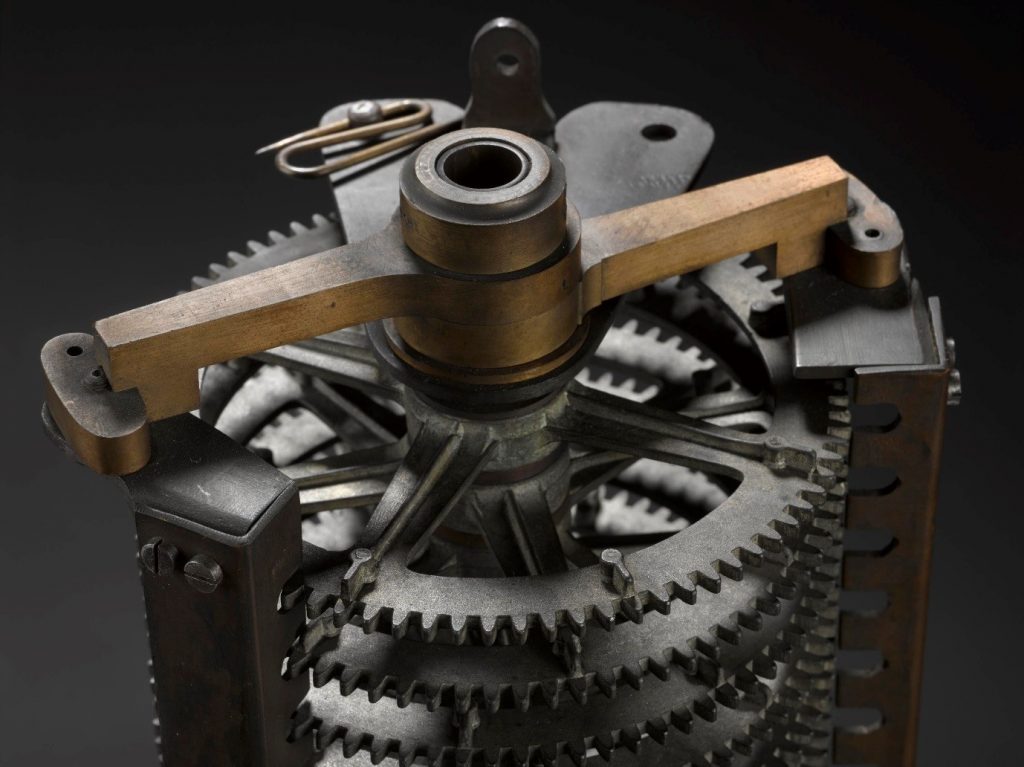Please note: The event discussed below took place in 2019. To find out what exhibitions and activities are open today, visit our What’s On section.
Inspired by both Babbage’s ideas and the Science Museum Group collection, digital artist Rafael Lozano-Hemmer has created Atmospheric Memory, a breathtaking new immersive installation as part of Manchester International Festival 2019.
Imagine the entire history of human speech—every joke, every declaration of love, every angry word—captured in the atmosphere for all of time. Mathematician and computing pioneer Charles Babbage (1791–1871) presented this beautiful (and somewhat terrifying) idea in 1837.
He believed that each breath and tiny motion was imprinted at the atomic level in the air that surrounds us. With access to the right kind of calculations and machinery, Babbage believed that you could rewind these turbulent movements and retrieve the fleeting voices of the past.
“The air itself is one vast library on whose pages are for ever written all that man has ever said or woman whispered.”
Charles Babbage (1837)
Atmospheric Memory
Babbage’s evocative 180-year old theory has inspired artist Rafael Lozano-Hemmer to create a new art environment, Atmospheric Memory. The installation will feature a series of artworks—’atmospheric machines’—that transform and shape the air into something we can see, hear and even touch. Lozano-Hemmer’s machines will be displayed inside a purpose-built temporary structure adjacent to the historic 1830 Warehouse at the Science and Industry Museum.
View this post on Instagram
Who was Charles Babbage?
Atmospheric Memory draws on Rafael Lozano-Hemmer’s longstanding interest in the writings and work of Charles Babbage, a computing pioneer and key figure on the scientific scene in 19th century London.
Babbage was a fellow of the Royal Society and a prolific writer, publishing 83 papers and six full-length books on wide-ranging subjects including mathematics, geology, submarines and solar eclipses, as well as chess. The Science Museum Group holds a vast archive of Babbage’s drawings, notebooks and papers, which are open to all through our online collection.

Science Museum Group Collection
© The Board of Trustees of the Science Museum
Babbage’s engines and inventions
From Steampunk to computing, Babbage’s influence is still felt in contemporary science and culture. Much of his career was dedicated to creating, tinkering and sometimes struggling with designs for the world’s first automatic computing machines.
His most famous inventions were the Difference and Analytical Engines. These were large steam-driven devices that could efficiently generate and calculate the values of mathematical tables (which had previously only ever been done painstakingly by hand) using a system of mechanised cogs and gears.
Babbage was irritated by frequent human errors in complex mathematical calculations. In the 1820s, he worked with engineer Joseph Clement on revolutionary designs for an automatic calculator that would generate numbers without mistakes. They created a trial model of Difference Engine No.1. It was based on the mathematical principle of calculating finite differences (hence the name) and was able to flawlessly calculate simple number tables.
His demonstrations impressed government ministers so much that they gave him funding to build a full-scale version of the engine. To Babbage’s great frustration, however, the machine was never completed and was transferred to the Science Museum in London in 1862. A more efficient, simpler version of the Difference Engine (No.2) was finally completed by volunteers at the Science Museum in 1991, for the bicentenary of his birth.

Science Museum Group © The Board of Trustees of the Science Museum
While working on his Difference Engine, Babbage also came up with a concept for a more elegant and sophisticated machine: the Analytical Engine. This was the world’s first fully automated computational machine that was able to calculate almost any mathematical function (even algebraic symbols). The engine had many components that are essential parts of a modern electronic computer—a kind of memory storage, a processor, as well as input and output devices.
It was also fully programmable using a system of punched cards (an idea Babbage borrowed from textile looms), which meant that it could operate in any desired sequence. Babbage’s friend and collaborator Ada Lovelace was the first to recognise the possibilities of this machine and, in effect, she became the first ever computer programmer.
Again, the machine was never completed in his lifetime. However, a large section of the Analytical Engine was put together by his youngest son Henry Prevost, and this will be on display at the Science and Industry Museum as part of Atmospheric Memory.
An atmospheric archive of voices
So, what do all these mathematical machines have to do with our archive of lost voices in the atmosphere? Babbage’s theory about rewinding the movement of particles in the air appeared in one of his lesser known books—the Ninth Bridgewater Treatise, written by Babbage in 1837 while he was working on his calculating engines.
It was an unsolicited addition to a series of popular science books—the Bridgewater Treatises—which were funded by the Reverend William Wherwell. They were written by leading thinkers in an attempt to reconcile the latest findings of scientific research and a literal reading of Old Testament and Christian scripture.
Babbage’s own volume, which was unfunded, was an attempt to show how mathematics and computational thinking could help reveal the mysteries and the nature of the divine in the organisation of the cosmos (very much ahead of its time!)
In the book, Babbage even gets close to painting a picture of God as a computer programme; a divine being with a cosmic machine that set the universe in motion. His discussion of movements and sounds imprinted in the atoms of the atmosphere was part of this wider argument. It also drew on an expanded sense of time that was developing in scientific circles due to new findings in geology.
Rafael Lozano-Hemmer’s artworks are predominantly voice-activated and produce immersive audiovisual environments that make Babbage’s “Atmospheric Memory” theory more tangible. Using augmented reality, robotics, ripple tanks, nanotechnology, and other technologies, the exhibition produces and examines polyphony, wave propagation, echoes, resonance and fluid dynamics.
Atmospheric Memory has been commissioned by Manchester International Festival, the Science and Industry Museum, FutureEverything, ELEKTRA/Arsenal, Montreal and Carolina Performing Arts – University of North Carolina at Chapel Hill. Produced by Manchester International Festival and curated with FutureEverything and Science and Industry Museum.
Supported by Wellcome.
Accompanied by an education programme supported by The Granada Foundation.